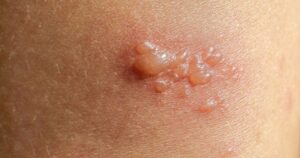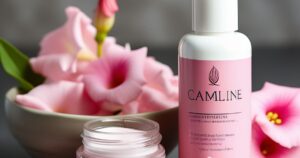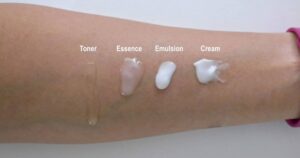In the vast realm of skincare, patch testing can be likened to a trusted companion, guiding us towards harmonious and radiant skin. Like a gentle embrace of assurance, this technique allows us to determine the compatibility of new products with our unique skin chemistry. With its meticulous process and insightful results, patch testing empowers us to make informed decisions, ensuring our skincare regimens are tailored to our needs. Join us as we unravel the secrets of effective patch testing, embracing the journey towards healthier and happier skin.
Key Takeaways
- Patch testing is important for identifying potential allergic reactions and ensuring the safety and efficacy of new skin care products.
- It should be performed at least 48 hours before using a product on the entire face or body, and results may take up to 72 hours to show signs of sensitivity.
- Properly cleansing the skin before patch testing is crucial to create an ideal environment for accurate results.
- Patch test results should be carefully interpreted, noting the timing and intensity of reactions, comparing them with medical history and previous reactions, and consulting with dermatologists or allergists for expert guidance.
The Importance of Patch Testing
The importance of patch testing lies in its ability to identify potential allergic reactions, ensuring the safety and efficacy of new skincare products. Patch testing is a method used by dermatologists and skincare professionals to determine if a person is sensitive or allergic to certain ingredients. By applying a small amount of the product to a small area of skin, typically on the forearm or behind the ear, potential reactions can be observed. This process helps to prevent adverse reactions, such as redness, itching, or swelling, which can occur when using a product that contains allergens. Skipping patch testing can lead to serious consequences, including severe allergic reactions and skin damage. Therefore, it is crucial to always perform a patch test before trying out new skincare products, as it allows individuals to make informed decisions and select products that are suitable for their specific skin type and condition.
When to Patch Test
An important aspect of patch testing is determining when to perform the test to ensure the safety and effectiveness of new skincare products. When it comes to starting patch testing, it is recommended to do so at least 48 hours before you plan to use the product on your entire face or body. This allows enough time for any potential allergic reactions or skin irritations to manifest. It is also important to note that patch test results may take up to 72 hours to show any signs of sensitivity. During this waiting period, it is crucial to refrain from using the product on your face or body to avoid any adverse reactions. By following these guidelines, you can ensure that you are patch testing your skincare products at the right time and allowing enough time for accurate results.
Step-by-Step Guide to Patch Testing
To perform a patch test accurately, follow this step-by-step guide that outlines the necessary precautions and procedures. Patch testing is a technique used to determine if a skincare product or ingredient causes any adverse reactions on the skin. It involves applying a small amount of the product or ingredient to a patch of skin, usually on the forearm or behind the ear, and monitoring for any signs of irritation or allergic reactions. The benefits of patch testing are immense, as it helps individuals identify potential allergens or irritants before applying them to the entire face or body. This can prevent unpleasant reactions such as redness, itching, or even dermatitis. By following this simple patch testing technique, you can ensure that you are using skincare products that are safe and suitable for your skin type, promoting healthy and radiant skin.
Common Mistakes to Avoid in Patch Testing
One of the most common mistakes individuals make in patch testing is failing to properly cleanse their skin beforehand. This step is crucial as it ensures that the skin is free from any impurities or residues that could interfere with the test results. To avoid this mistake, it is important to follow these steps:
- Gently cleanse the skin with a mild cleanser to remove any dirt, oil, or makeup.
- Rinse thoroughly with lukewarm water to ensure all traces of cleanser are removed.
- Pat the skin dry with a clean towel, avoiding any rubbing or harsh movements.
By properly cleansing the skin before patch testing, you create an ideal environment for accurate results. Once the skin is cleansed, you can proceed with the patch test and have confidence in the validity of the results.
Now that we have discussed common mistakes to avoid in patch testing, let’s move on to tips for interpreting patch test results.
Tips for Interpreting Patch Test Results
What are some key strategies for effectively interpreting patch test results? Interpreting patch test reactions is an essential part of understanding patch test allergies. When conducting a patch test, it is important to carefully observe and analyze the skin’s reaction to different substances. One key strategy is to note the timing and intensity of the reaction. This can help determine the severity of the allergy and guide future product choices. Another strategy is to compare the patch test results with the patient’s medical history and previous reactions. This can provide valuable insights into potential triggers and help identify patterns. Additionally, consulting with a dermatologist or allergist can provide expert guidance in interpreting the patch test results and developing a personalized skincare plan. Overall, effective interpretation of patch test results requires a combination of careful observation, knowledge of allergies, and expert advice.
Frequently Asked Questions
Can I Skip Patch Testing if I Have Used a Similar Product Before Without Any Issues?
While you may have used a similar product without issues in the past, it is still recommended to patch test new products. Each individual’s skin is unique, and patch testing helps identify potential allergic reactions or irritations, ensuring optimal safety and effectiveness.
How Long Should I Leave the Patch Test on My Skin Before Removing It?
When conducting a patch test for skincare products, it is important to leave the patch on for at least 24-48 hours. If any reaction occurs, such as redness or irritation, remove the patch immediately and consult a dermatologist for further guidance.
Can I Patch Test Multiple Products at the Same Time?
Patch testing multiple product combinations simultaneously is not recommended as it can make it difficult to identify the specific product causing a reaction. Patch testing is crucial for determining the compatibility and potential benefits of skincare products.
Is It Necessary to Patch Test All Skincare Products, or Only Certain Types?
Patch testing is necessary for all skincare products, regardless of their type. It ensures safety and helps identify potential allergic reactions or irritations. Understanding the patch testing process is crucial for maintaining healthy and radiant skin.
What Should I Do if I Experience a Reaction During the Patch Test?
If you experience a reaction during a patch test, it is important to discontinue use of the product immediately. Consult with a healthcare professional for guidance on managing the reaction and consider alternative testing methods for future skincare products.
Conclusion
In conclusion, patch testing is an essential step in the skincare routine to identify potential allergies or irritations caused by new products. By following the step-by-step guide and avoiding common mistakes, individuals can ensure the safety and effectiveness of their skincare regimen. Interpreting patch test results accurately is crucial, and seeking professional guidance when needed is highly recommended. Remember, taking the time to patch test can prevent unwanted skin reactions and help achieve the desired results, ensuring a happy and healthy complexion.









